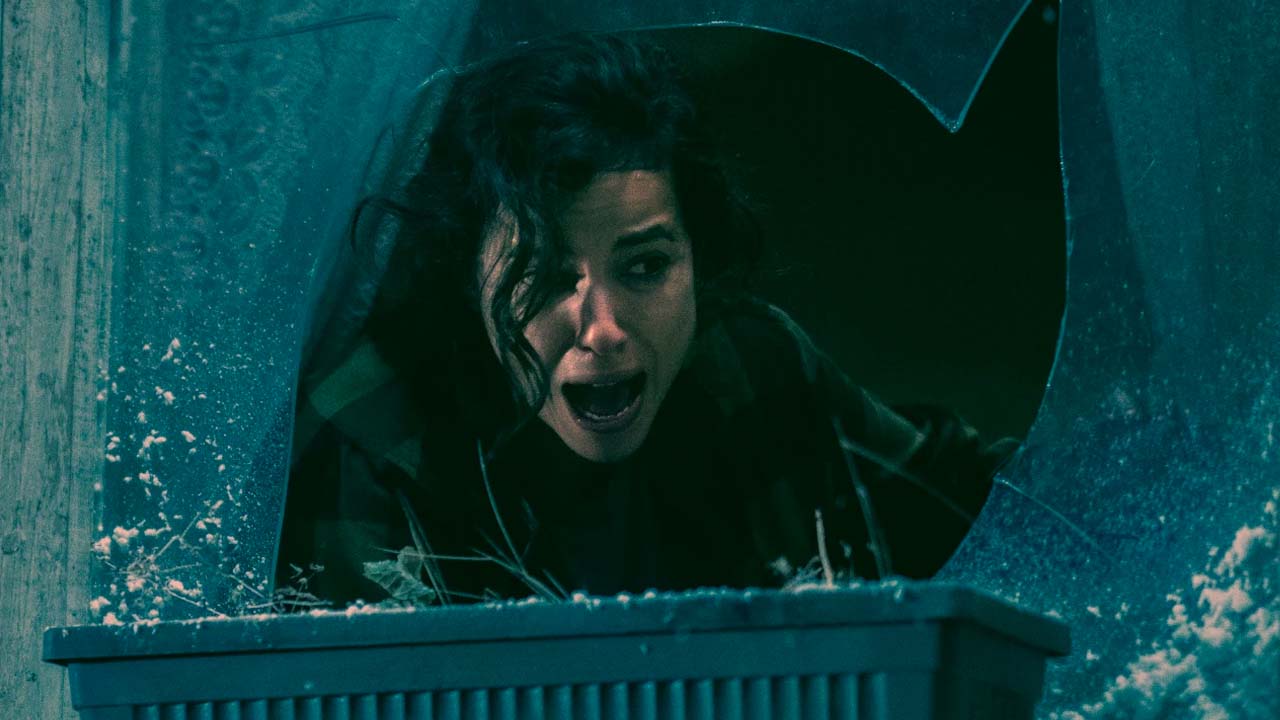No One Gets Out Alive is laden with lazy clichés that never amount to anything truly scary

Netflix’s horror film No One Gets Out Alive is effectively eerie in places but let down by lazy clichés, writes Katie Parker.
Spooky season is finally here and you know what that means: for the next 31 days streaming services are but a smorgasbord for hit and miss horror releases—and from good to bad, to bad to terrible, it is now time to wade through that spooky swamp to uncover the hidden gems. First up: Netflix’s No One Gets Out Alive.
Using the undocumented immigrant experience as a foil for a more traditional tale of terror, No One Gets Out Alive follows Ambar, a young Mexican woman freshly smuggled into Ohio—and in desperate need of affordable accommodation where she won’t be asked too many questions.
This arrives in the form of a creepy old boarding house straight out of Hitchcock, complete with flickering lights, groaning plumbing, and a secret forbidden basement where no one’s allowed to go—but Ambar doesn’t have the luxury of looking out for red flags. Sharing her new digs with gruff live-in landlord Red (Marc Menchaca), his not-all-there brother Becker (David Figlioli), and a smattering of other young immigrant women, Ambar keeps her head down and stays out of the way, but, as the title suggests, not all is well in her new abode…
Adapted by first time director Santiago Menghini from The Ritual author Adam Neville’s novel of same name, No One Gets Out Alive pairs genre horror with social horror, observing the gruelling daily struggles as an undocumented immigrant. Working in what is essentially a sweat shop and struggling to scrape together enough cash for a fake ID, for much of the film a haunted house is the least of Ambar’s worries—an approach which, to start with at least, creates an effectively eerie sense of inescapable dread.
It is a shame then that No One Gets Out Alive is also laden with lazy clichés that don’t ever amount to anything truly scary: lights flicker, plumbing groans, ghostly apparitions practically play charades to get their message across (the gist of which being, “don’t go in the scary basement”). By the time the film gets to its final act it all starts to wear a bit thin and, worst of all, seems destined to descend into icky exploitation territory. That is, until Menghini at long last makes his big reveal—and to be fair, it is a doozy.
To give any more away than that would be to ruin perhaps the only trick No One Gets Out Alive has up its sleeve, but suffice to say: whatever you’re imagining? It’s not that.
The latest in a recent spate of horrors to throw a bonkers eleventh-hour curveball in at the end of an otherwise fairly traditional chiller (James Wan’s Malignant and Mike Flanagan’s Midnight Mass come to mind), No One Gets Out Alive takes a while to get to there, but when it does, it is in admirably spectacular fashion—and with some of the most stomach-turning CGI I’ve seen in a while.
But can a last minute goofy twist save a film that has otherwise been oppressively, claustrophobically grim? Unfortunately, as fun as this final act may be, it ultimately only serves to deepen the disconnect between its all-too -disparate parts. Part gritty immigration drama, part hackneyed haunted house horror, Menghini never fully commits to either—that is, until it’s far too late.
















